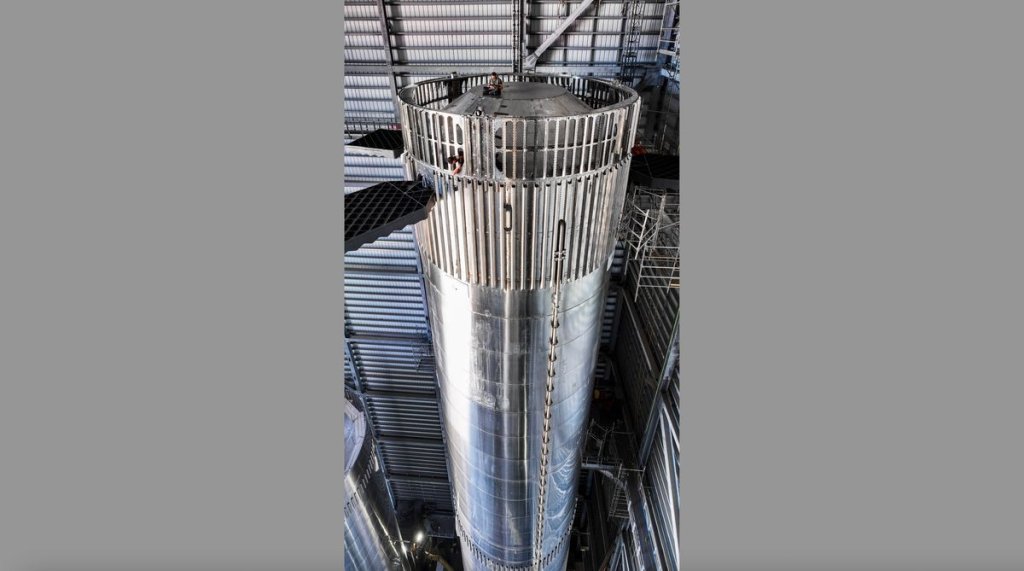SpaceX has added some new hardware to its latest Starship rocket prototype, which is being prepped for a test flight in the near future.
Starship, SpaceX’s next-gen deep-space transportation system, consists of two fully reusable elements — a huge first-stage booster known as Super Heavy and a 165-foot-tall (50 meters) upper-stage spacecraft called Starship.
The pair has flown together only once to date, on an April 20 test flight from SpaceX’s Starbase site in South Texas that aimed to send Starship partway around Earth. That didn’t happen, however: Starship and Super Heavy failed to separate as planned, and SpaceX beamed up a self-destruct command, detonating the duo high above the Gulf of Mexico.
Related: Relive SpaceX’s explosive 1st Starship test in incredible launch photos
SpaceX has made a variety of design changes in the wake of that debut, aiming to increase the chances of success on future Starship flights.
The most dramatic change concerns the spacecraft-separation system. It will be quite different on the next Starship mission, which will involve a Super Heavy prototype named Booster 9 and an upper-stage vehicle called Ship 25 — and SpaceX just gave us a sneak peak.
“Vented interstage and heat shield installed atop Booster 9. Starship and Super Heavy are being upgraded to use a separation method called hot-staging, where Starship’s second stage engines will ignite to push the ship away from the booster,” the company wrote today (Aug. 18) in a post on X (formerly Twitter) that shared two photos of the new hardware.
“The superhot plasma from the upper-stage engines has gotta go somewhere,” Musk told journalist Ashlee Vance in a discussion on X on June 24, during which he revealed the design change. “So we’re adding an extension to the booster that is almost all vents, essentially. So that allows the the upper-stage engine plume to go through the sort of vented extension of the booster and not just blow itself up.”
Hot staging, which is commonly used on Russian rockets, could end up increasing Starship’s payload-to-orbit capacity by 10%, Musk added.
The flight of Booster 9 and Ship 25 will have similar goals as the April 20 mission, Musk has said. SpaceX aims to launch the test flight soon, but no target date has been announced.
And Starship has not yet been cleared for liftoff by the U.S. Federal Aviation Administration (FAA). The FAA, which grants launch licenses, is still reviewing the mishap report that SpaceX filed about the April 20 test flight.
“When a final mishap report is approved, it will identify the corrective actions SpaceX must make,” FAA officials said in an emailed statement to Space.com this week. “Separately, SpaceX must modify its license to incorporate those actions before receiving authorization to launch again.”

